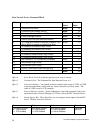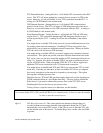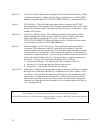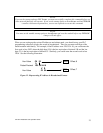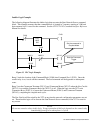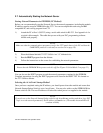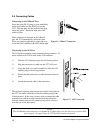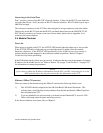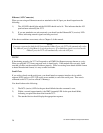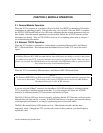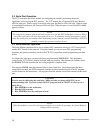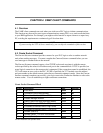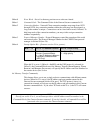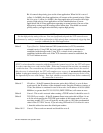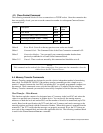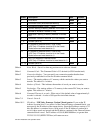
CTI 2572 Installation and Operation Guide
28
Ethernet (AUI Connector)
When you are using an Ethernet transceiver attached to the AUI port you should experience the
following:
1) The AUI LED should light and the LB LED should not be lit. This indicates that the AUI
port has been selected by the 2572.
2) If you are attached to an active network, you should see the Ethernet RCV (receive) LED
flicker, indicating network signals are being received.
If the above conditions are not met, refer to Chapter 5 of this manual.
NOTE:
If you are connected to both the AUI port and the 10BaseT port, the 2572 will automatically select
the 10BaseT port if a Link Beat is received on the port. If no Link Beat signal is received on the
10BaseT port, the 2572 will automatically select the AUI port.
TCP/IP
If functioning properly, the 2572 will respond to an ICMP Echo Request message known as a ping.
When you ping the 2572 from a network node, it should reply. If the module does not reply, make
sure that you have set the module IP address properly. When converting from dotted decimal format
to dotted hexadecimal format, it is easy to make a mistake.
Serial Ports
If you wish to check out the serial ports, you should attach an operator interface device which
supports NITP (such as a CTI 5250 series access module) to one of the serial ports. Then send a
command to the 2572 (such as a Read V Memory).
You should observe the following:
1) The RCV (receive) LED for the port should blink when the command is sent,
2) Within a second (approximately), the XMT (transmit) LED for the port should blink,
indicating a response has been sent from the 2572.
3) The attached device should display the appropriate response.



